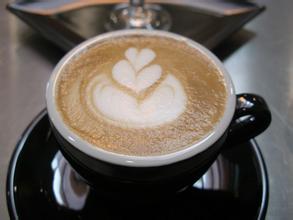Introduction to the characteristics and varieties of boutique coffee beans in Ethiopian coffee flavor and taste manor
Columbus came to Jamaica in 1494, and in 1509 Spain declared Jamaica its colony and renamed it Santiago. Spain's slave policy towards the indigenous peoples led to the extinction of the Arawaks on the island as a result of war, disease and enslavement.
As a labor force, Spain began to sell slaves from Africa to Jamaica since 1517, causing blacks to gradually become the dominant nation of Jamaica. In 1538, the Spanish founded the Spanish city as the capital of Jamaica.
Since the late 16th century, Jamaica has been repeatedly attacked by pirates from France, England, the Netherlands and other countries. In May 1655, a British fleet led by William Bing and Robert Venables occupied Jamaica. They immediately invited pirates to the island's port of Loire to help defend the Spaniards from possible counterattacks. Between 1657 and 1658, the Spaniards fought back from Cuba and failed. In the decades after 1872, Jamaica's economy gradually prospered, but its social and cultural development was always suppressed by the colonial authorities. Especially during the Great Depression, all walks of life in Jamaica were very dissatisfied with the depressed social situation. In 1938, workers in Jamaica revolted. After that, the colonial authorities were forced to grant local autonomy. In 1944, universal suffrage was first held in Jamaica.
In 1958, Jamaica joined the Union of the West Indies, but in 1961, voters vetoed the Union Treaty, leading to Jamaica's withdrawal. (the Ethiopian coffee ceremony began when the hostess laid a 2Mel 3-square-meter floor with a local grass, followed by a small stove for roasting coffee beans and a small table for coffee utensils.
Then there is the washing of coffee beans. First take a bowl of light green coffee beans, wash them in a small basket, just like we wash rice, wash them, take them out and spread them flat on a slightly concave iron plate, then put the iron plate on a small stove fueled by wood or charcoal and start baking. During the baking process, the hostess fiddled with a curved iron bar from time to time. As the temperature increased, the color of the coffee beans changed from light green to golden yellow, and the evaporated coffee beans began to crack and give off a faint fragrance, just as we usually smell in cafes, but much lighter. After roasting, the coffee beans turn dark brown and the aroma becomes stronger.
After baking, the next step is to crush the coffee beans. The hostess withdrew the iron plate to the outside of the stove, cooled slightly, poured the roasted coffee beans into an iron mortar about 30 centimeters high, similar to our processed traditional Chinese medicine, and hammered the beans into coffee powder with an iron pestle. This action is not as simple as it seems. One hand should be held on the iron mortar below, and the other hand should be raised high, because only by holding it high can one be able to do so. To force the iron pestle accurately into the small mouth of the iron mortar, inexperienced people will only hit their own hands. I have also asked curiously, why not grind coffee in an iron mill or a coffee machine? The host told me that if grinding with a machine, the high-speed friction between coffee beans and metal brings a lot of impurities on the iron, which will affect the pure flavor of the coffee after processing.

Important Notice :
前街咖啡 FrontStreet Coffee has moved to new addredd:
FrontStreet Coffee Address: 315,Donghua East Road,GuangZhou
Tel:020 38364473
- Prev

Fragrant Jamaican Coffee Flavor and Taste introduction to Fine Coffee in Manor area
Columbus came to Jamaica in 1494, and in 1509 Spain declared Jamaica its colony and renamed it Santiago. Spain's slave policy towards the indigenous peoples led to the extinction of the Arawaks on the island as a result of war, disease and enslavement. In order to replenish the labor force, Spain began to sell slaves from Africa to Jamaica since 1517, causing blacks to gradually become teeth.
- Next

Introduction to the Fine Coffee with Fruit Flavor and Flower elements
Since the establishment and trade of Panama have important relations with the United States, Panama began to use the US dollar as the currency in circulation in 1907. Its own currency is Barboa, which is equivalent to the US dollar and is used in the country at the same time. It is the first country in the world to use the US dollar as legal tender outside the United States in May 1989. In the general election in Panama, both the ruling party and the opposition party claimed victory, so the election result
Related
- Detailed explanation of Jadeite planting Land in Panamanian Jadeite Manor introduction to the grading system of Jadeite competitive bidding, Red bid, Green bid and Rose Summer
- Story of Coffee planting in Brenka region of Costa Rica Stonehenge Manor anaerobic heavy honey treatment of flavor mouth
- What's on the barrel of Blue Mountain Coffee beans?
- Can American coffee also pull flowers? How to use hot American style to pull out a good-looking pattern?
- Can you make a cold extract with coffee beans? What is the right proportion for cold-extracted coffee formula?
- Indonesian PWN Gold Mandrine Coffee Origin Features Flavor How to Chong? Mandolin coffee is American.
- A brief introduction to the flavor characteristics of Brazilian yellow bourbon coffee beans
- What is the effect of different water quality on the flavor of cold-extracted coffee? What kind of water is best for brewing coffee?
- Why do you think of Rose Summer whenever you mention Panamanian coffee?
- Introduction to the characteristics of authentic blue mountain coffee bean producing areas? What is the CIB Coffee Authority in Jamaica?

